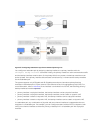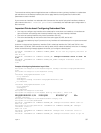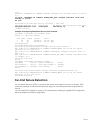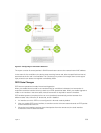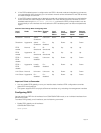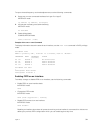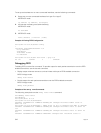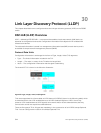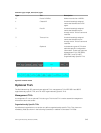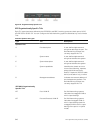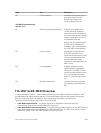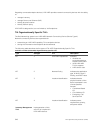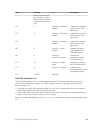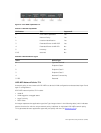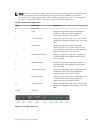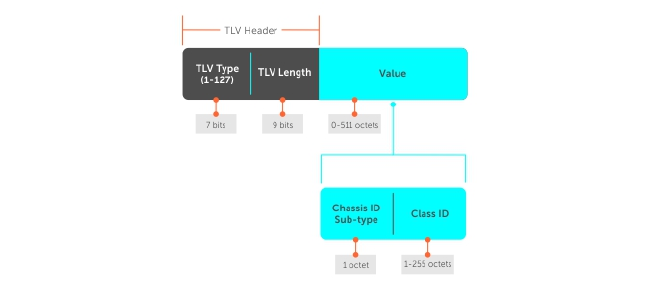
30
Link Layer Discovery Protocol (LLDP)
This chapter describes how to configure and use the link layer discovery protocol (LLDP) on the Z9500
switch.
802.1AB (LLDP) Overview
LLDP — defined by IEEE 802.1AB — is a protocol that enables a local area network (LAN) device to
advertise its configuration and receive configuration information from adjacent LLDP-enabled LAN
infrastructure devices.
The collected information is stored in a management information base (MIB) on each device, and is
accessible via simple network management protocol (SNMP).
Protocol Data Units
Configuration information is exchanged in the form of Type, Length, Value (TLV) segments.
• Type — The kind of information included in the TLV.
• Length — The value, in octets, of the TLV after the Length field.
• Value — The configuration information that the agent is advertising.
The chassis ID TLV is shown in the following illustration.
Figure 68. Type, Length, Value (TLV) Segment
TLVs are encapsulated in a frame called an LLDP data unit (LLDPDU) (shown in the following table), which
is transmitted from one LLDP-enabled device to its LLDP-enabled neighbors. LLDP is a one-way
protocol. LLDP-enabled devices (LLDP agents) can transmit and/or receive advertisements, but they
cannot solicit and do not respond to advertisements.
There are five types of TLVs. All types are mandatory in the construction of an LLDPDU except Optional
TLVs. You can configure the inclusion of individual Optional TLVs.
544
Link Layer Discovery Protocol (LLDP)



